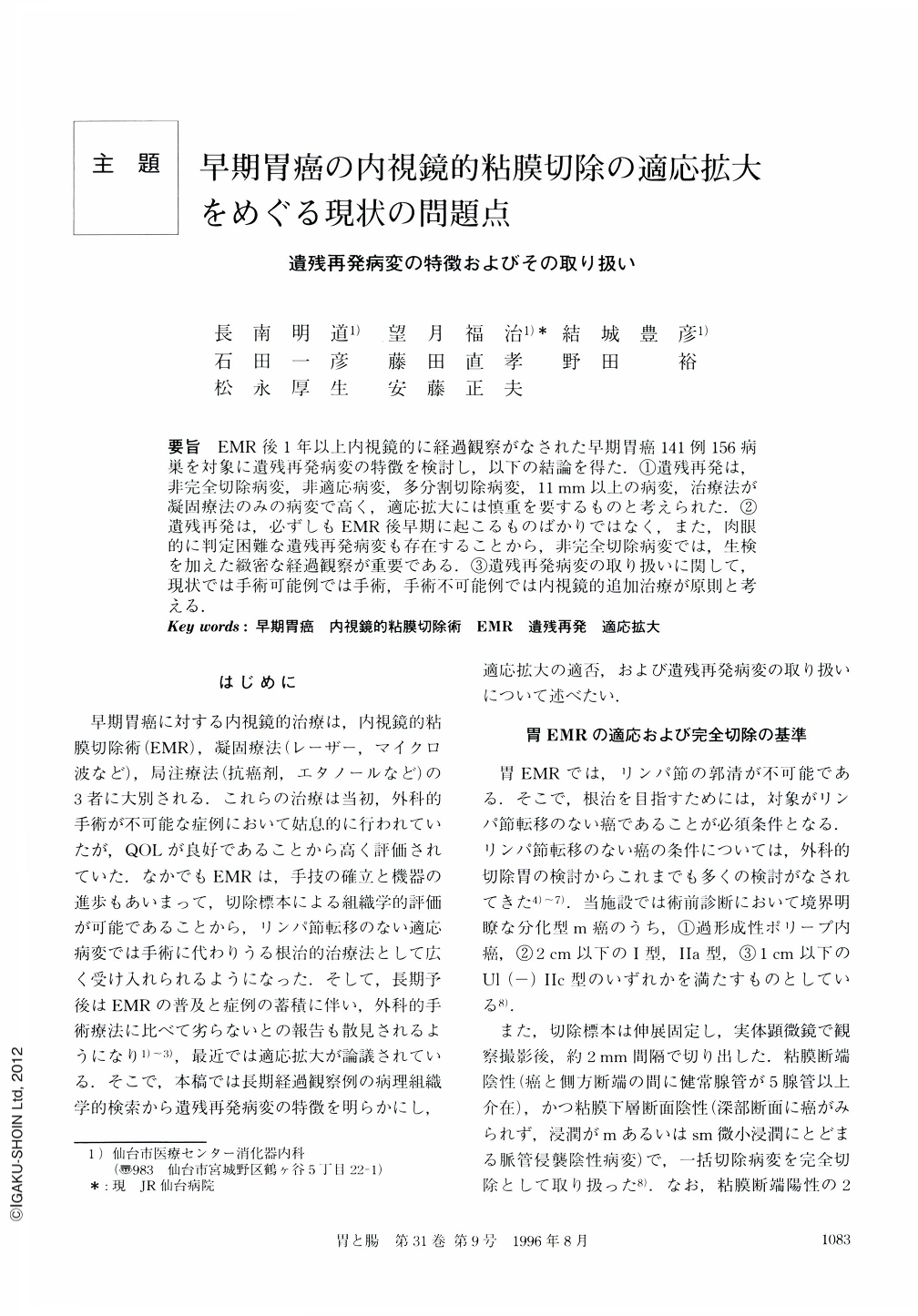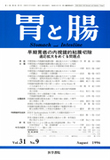Japanese
English
- 有料閲覧
- Abstract 文献概要
- 1ページ目 Look Inside
- サイト内被引用 Cited by
要旨 EMR後1年以上内視鏡的に経過観察がなされた早期胃癌141例156病巣を対象に遺残再発病変の特徴を検討し,以下の結論を得た.①遺残再発は,非完全切除病変,非適応病変,多分割切除病変,11mm以上の病変,治療法が凝固療法のみの病変で高く,適応拡大には慎重を要するものと考えられた.②遺残再発は,必ずしもEMR後早期に起こるものばかりではなく,また,肉眼的に判定困難な遺残再発病変も存在することから,非完全切除病変では,生検を加えた緻密な経過観察が重要である.③遺残再発病変の取り扱いに関して,現状では手術可能例では手術,手術不可能例では内視鏡的追加治療が原則と考える.
We conducted this study for the purpose of clarifying the characteristics of cancer residue after endoscopic mucosal resection (EMR) of early gastric cancer. EMR was performed and endoscopically followed up for more than 12 months for 156 lesions in 141 patients. The results were as follows :
1) Cancer residue was seen in 20 lesions (13%) . It was observed more frequently with incompletely resected lesions, partitively resected lesions, those not indicated for resection, and those more than 10 mm in diameter. Therefore, we should be even more cautious with regard to extending indications.
2) Eight of twenty lesions (40%) recurred more than 12 months after EMR and some of those were difficult to detect macroscopically. Therefore, frequent follow-up is important not only during the first postoperative year but also in the subsequent years. Furthermore, biopsy of the ulcer scar after EMR should be performed in the subsequent endoscopic examination.
3) Surgical resection should be chosen if possible for patients with cancer residue because the effectiveness of additional endoscopic treatment has not been sufficiently established yet.

Copyright © 1996, Igaku-Shoin Ltd. All rights reserved.


